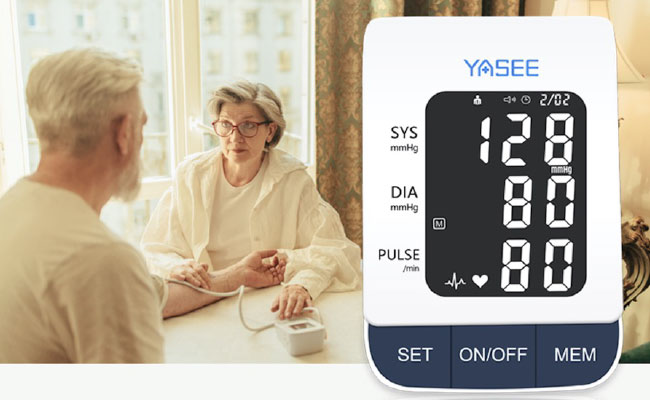
Yasee will exhibit its new technology at Expomed Euroasia and TIHE 2023
2023-03-08
Why to monitor blood pressure, blood sugar, blood lipid, uric acid? What are the standards?
2023-04-04Blood pressure monitors allow patients to keep track of their blood pressure measurements while at home, rather than relying only on doctor visits. But not all blood pressure monitors are created equal. Read on to discover how they work and whether patients should use an arm or wrist blood pressure monitor.
What Is a Blood Pressure Monitor?
We’re all familiar with getting our blood pressure taken during an annual physical or doctor visit. But patients with chronic blood pressure issues need to have it measured more than once or twice a year, and that’s where blood pressure monitors come in. Blood pressure monitors allow patients to take their blood pressure at home, without the assistance of a nurse or other medical professional. They feature a digital screen that gives a readout of your systolic and diastolic blood pressure, as well as your pulse per minute. The screen either attaches to the armband via a tube or can be strapped directly to the wrist.
How Do You Use a Blood Pressure Monitor?
Patients should avoid smoking, exercising and drinking caffeine for at least 30 minutes before they take their measurements, as these activities can all increase heart rate and effect blood pressure. They should sit quietly for at least five minutes before using the blood pressure monitor. Patients should sit straight up on a chair with good back support, with their upper arm at heart level and their hand supported (not lifted in the air). They should sit with their legs uncrossed and their feet flat on the floor.
Patients should take their blood pressure measurements at the same time of day each time. They should also take a few readings one minute apart and look at the results to get an average. If their blood pressure suddenly spikes during one reading, they should wait five minutes and try again. At-home machines aren’t as accurate as the ones that doctors and nurses use, so one high reading is not necessarily an indication of an emergency.
While patients do not need a prescription in order to buy a blood pressure monitor, encourage them to bring it into the office on their next visit so you can test the model they choose against your clinical-quality sphygmomanometer. This will give you and the patient a good idea of how accurate the at-home model readings are.
Should You Use an Arm or Wrist Blood Pressure Monitor?
Patients may have questions for you about which model of blood pressure monitor they should buy. (You can also encourage them to reach out to a doctor or pharmacist for additional advice.) Many patients are drawn to wrist blood pressure monitors because of their convenient size and portability. However, wrist blood pressure monitors deliver less reliable readings, which is why the American Heart Association recommends an automatic, cuff-style, bicep (upper-arm) monitor.
Wrist monitors are less accurate than arm monitors because the arteries in your wrist are narrower and closer to your skin as compared your upper arm, which tends to result in higher and more volatile blood pressure readings. Wrist monitors are also very responsive to body positions, and your hands tend to move around more than your upper arms. Plus, it’s more difficult to raise and maintain your hands at the level of your heart vs. your upper arm.
That being said, some people find it uncomfortable and even painful to get their blood pressure measured at their bicep, especially if they have large arms. In these cases, a wrist monitor might be a better choice.




